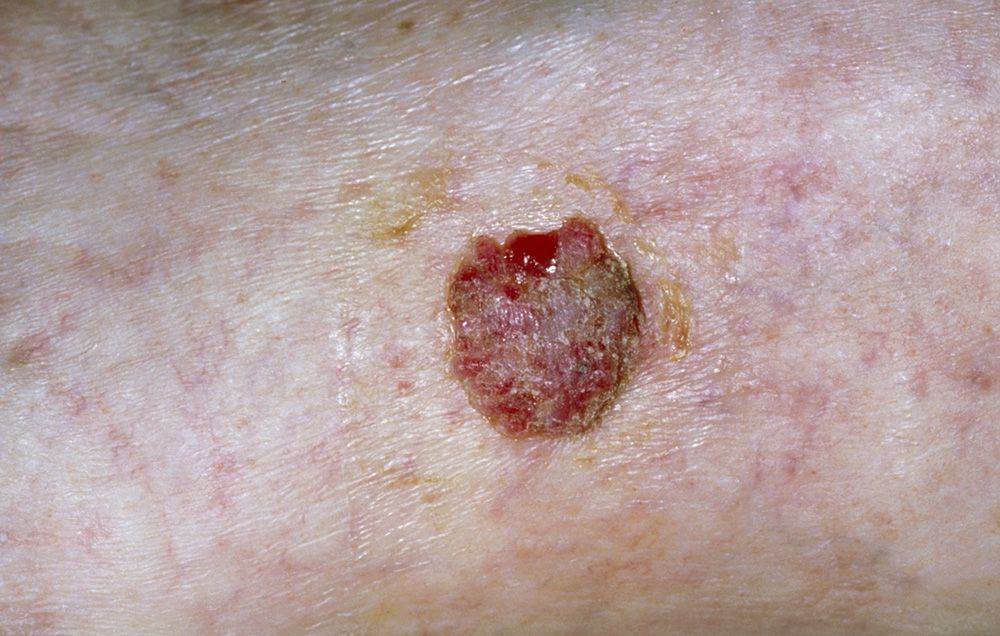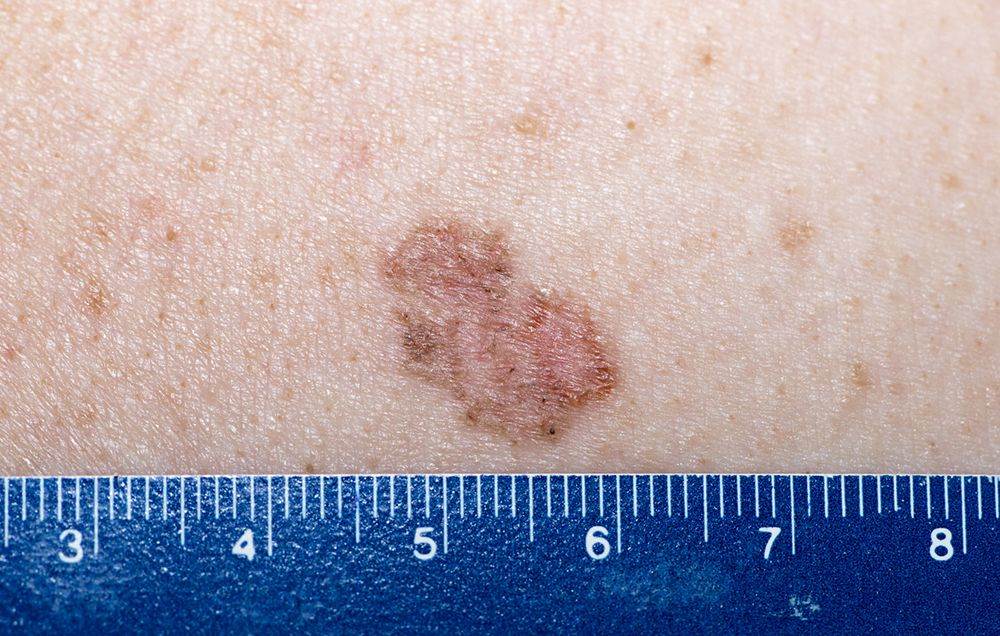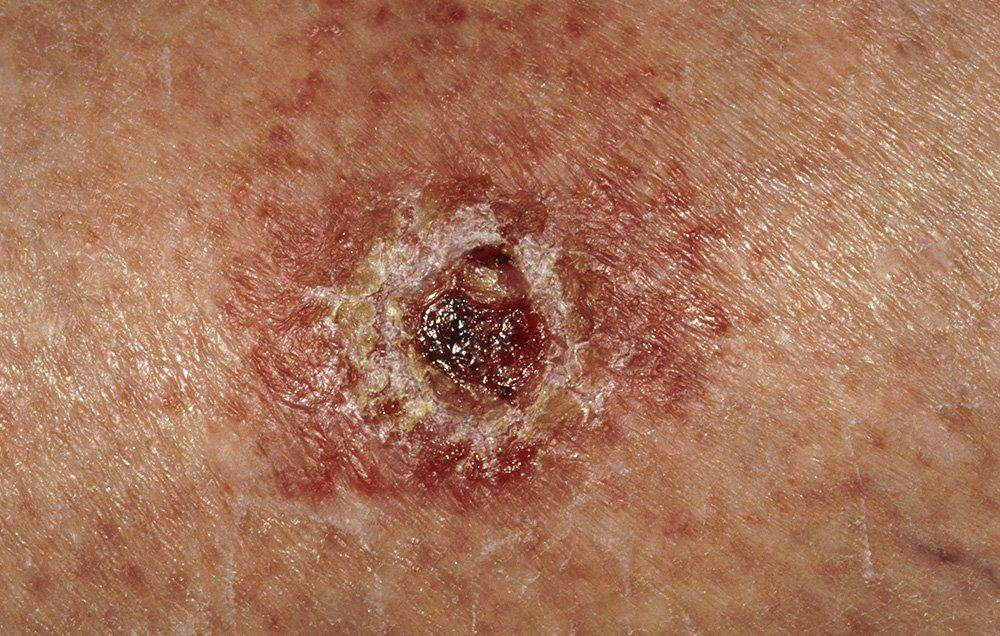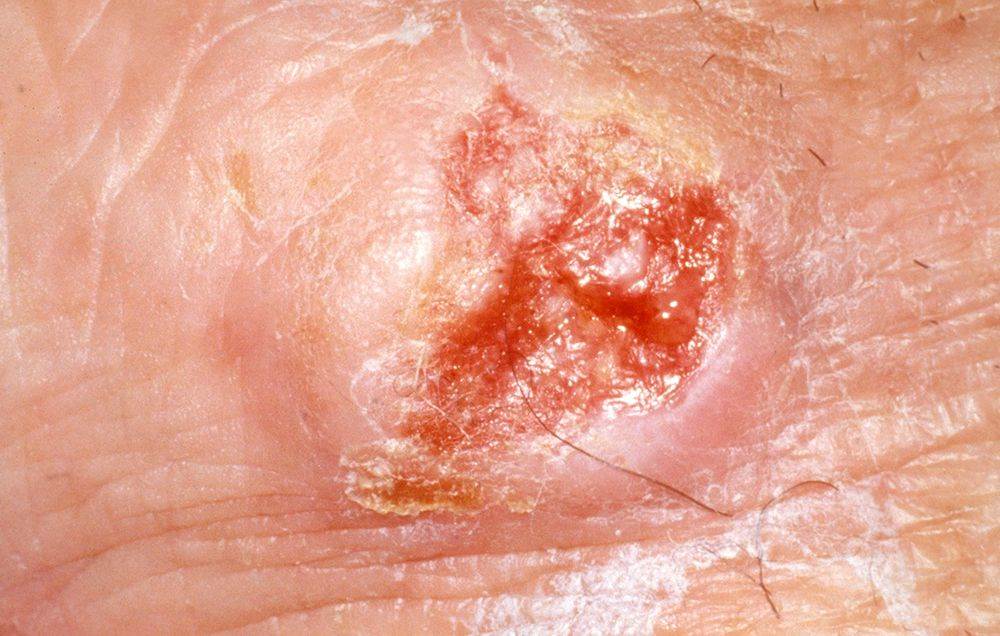Melanoma is the deadliest form of skin cancer, and that's why knowing how to recognise melanoma symptoms is drilled into our heads every summer. Thing is, melanoma is actually the rarest type of skin cancer, and it's the only one characterised by new or changing moles.
"Non-melanoma skin cancers like basal cell or squamous cell are what we call skin-derived cancers, not mole-derived," says dermatologist Dr Adam Friedman. Translation: They don't show up as moles.
And considering both basal cell and squamous cell skin cancers are more common than melanoma, it's probably time you learned about their warning signs and symptoms—not to mention the symptoms of melanoma that have nothing to do with moles.
Here's what to watch out for.





andresr ©Getty Images
Scaly red lumps
Squamous cell carcinomas may show up as red or brown rough patches that resemble old warts or scabs. "With these kinds of lumps, and really with any skin wound or lesion, the biggest red flag is that it doesn't go away," Friedman says. A normal skin issue should heal in a matter of days. If your lump or lesion persists, you'll want to get it checked out, he says.
andresr ©Getty Images
Red patches
Basal cell carcinoma - the most common form of skin cancer - can show up as a small red swatch of irritated skin, Friedman says. The swatch may be itchy and it may peel, and so it could seem an awful lot like dry skin. "When you have a cancerous skin lesion, your immune system responds to those abnormal cells," Friedman explains. "That reaction can cause the redness or inflammation or scaling you're experiencing." If the patch sticks around, have your doctor take a look.
andresr ©Getty Images
Open sores
Basal cell carcinomas can also emerge as bloody, open, or scabbed-over sores, Friedman says. They almost look like the scabby skin that develops after a very bad sunburn. The likelihood of a basal cell spreading or "metastasising" to other parts of your body are extremely low, he says. "But they can still be destructive, especially if they're near your eye or mouth," he adds.
andresr ©Getty Images
Craters
Squamous cell carcinomas can resemble small craters - almost like shallow volcanoes with blood in the center. Like basal cell carcinomas, squamous cell cancers typically aren't deadly. But they can do damage and cause disfigurement, Freidman says. Again, you'll want to see someone if that crater persists or expands, Friedman says.
andresr ©Getty Images
Non-skin symptoms
While basal cell and squamous cell carcinomas tend to confine themselves to your hide, a melanoma is deadly because it eventually spreads into your body and causes systemic disease, Friedman explains.
If a melanoma does metastasise, the types of symptoms you experience depend a lot on the location of your cancer. "If the melanoma is by your lungs, you could have shortness of breath, or if it's on your head, you may have headaches or vision trouble," he says. "Really, the symptoms are all over the place."
Unfortunately, if you don't catch a melanoma until it reaches this stage, the prognosis is grim. "I hate to be dire, but if you're experiencing these symptoms because a melanoma has metastasised, you're already in big trouble," Friedman says.
There's also no predicting where a melanoma mole is likely to show up or take root. "Melanoma is really all over the place," he explains. "There's really no predictable pattern."
Hopefully, the takeaway from all of this is clear: You need to pay attention to your skin, and you need to see a doctor if you notice something strange going on.







.png&h=193&w=250&c=1&s=1)
.png&h=193&w=250&c=1&s=1)

